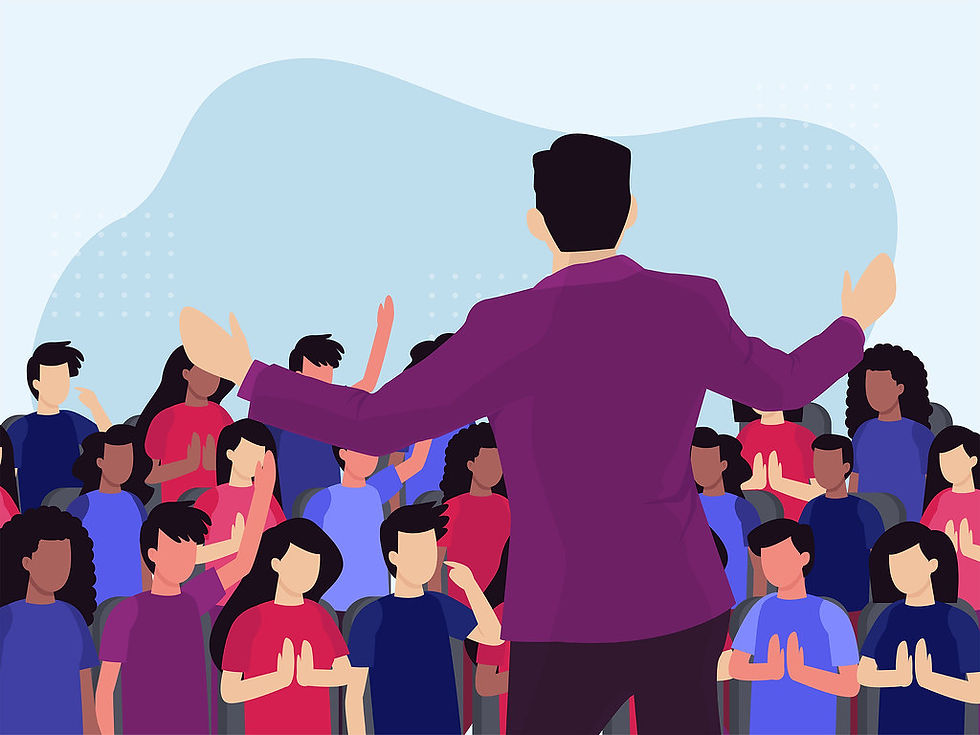Rehabilitation Programs for Offenders and their Effectiveness in Preventing Reoffending
- Neil Jadhav
- Mar 1
- 4 min read

Rehabilitation, or rehab, a term which we all have heard in our day-to-day lives, is a process much vaster than it seems. It involves re-educating those who have committed a crime and preparing them to re-enter society. It addresses all of the underlying root causes of crime in order to decrease the rate of recidivism(committing a crime even after being convicted of one). One example of this is using a psychological approach to target the cognitive distortions associated with specific kinds of crime. However, apart from this, rehab may also involve more general education like reading skills and career training. Its primary goal is to safely re-integrate offenders back into society.
Benefits of Rehab
Accelerated Healing Process
Rehabilitation has been proven to reduce the impact of numerous health conditions such as diseases (acute or chronic), illnesses, or injuries. It aids in improved recovery for patients by increasing the effectiveness of medical and surgical interventions. Accordingly, it helps to reduce complications faced due to various health conditions such as spinal cord injuries, fractures, or even strokes
Better Long-Term Well-being
Rehab has also been shown to reduce the effects of chronic health conditions such as cardiovascular disease, cancer, and diabetes. This promotes healthy aging by offering vital self-management strategies, providing assistive products, or directly addressing complications such as pain.
Smart Investment
Rehab is not only an investment health-wise, but also financially. It aids in avoiding costly hospitalization and also enables individuals to return to work and employment, ensuring they are financially secure.
Real-world applications of effective rehab
Norway’s Prison System
Norway's prison system (Halden Fensgel) is based on the principle of normalization and away from retribution to focus on rehabilitation. Basically, its goal is to help inmates become productive members when re-entering society rather than focusing on punishment to ‘teach them a lesson’. This is achieved by providing them with multiple amenities such as an exclusive mini fridge, flat-screen TV, private bathroom, and even access to an outdoor environment, giving them a feel of a normal life outside prison. The prison even includes a shared kitchen and living area “to create a sense of family” among inmates. All these factors contribute to its rightful title of the "world's most humane maximum-security prison". This has been proven to be extremely effective considering that Norway holds one of the lowest rates of reimprisonment after 2 years at 18%. Even the recidivism rate of re-charging for an offense during 5 years is 49.6% for property theft, 46.8% for violence, and 31.7% for sexual offenses as of 2017.
United States Code
The United States Code indicates that judges responsible for sentencing must acknowledge that imprisonment is ineffective for fostering correction and rehabilitation. In simple words, judges must take into account that simply putting someone in prison may not necessarily lead to a positive change for their future. In 2015, a coalition of reform advocates, such as the Koch family foundations, the ACLU, and the MacArthur Foundation, came together to propose a bipartisan initiative aimed at reforming the U.S. criminal justice system. President Obama even praised these reforms due to their positive impacts such as enhancing rehabilitation and providing job opportunities to those who have completed their sentences. One effective method that has reduced recidivism is providing educational opportunities to inmates. A recent study has even shown that when inmates obtained a GED(a high school equivalency credential) during incarceration, a 14% reduction in recidivism was observed.
Examples of Rehab Programs
Education Programs Providing opportunities for inmates to earn GEDs or pursue further education to improve employment prospects.
Vocational Training Programs
Teaching practical skills like carpentry, plumbing, or computer operation to increase employability upon release.
Substance Abuse Treatment Programs
Addressing addiction issues through therapy, medication management, and support groups.
Mental Health Treatment Programs
Providing counselling and therapy to manage mental health conditions like depression, anxiety, or PTSD.
Cognitive Behavioural Therapy (CBT)
A widely studied approach that helps offenders identify and modify negative thought patterns and behaviours that contribute to criminal activity.
Breaking the Cycle: The Urgent Need for Rehabilitation Reform
The implementation of rehabilitation programs faces numerous challenges. For example, due to long sentences being a common ruling by judges, overcrowding occurs in under-resourced prisons, limiting the availability and quality of rehabilitation programs. Additionally, due to workload burdens, most likely resulting from understaffing, probation services may prioritize higher-risk individuals, leading to reduced supervision and support for low-risk offenders, including some sex offenders and domestic abusers. This may lead to increased rates of recidivism. Moreover, current prison systems have created a cycle of recidivism due to the fact that the criminal justice system often prioritizes punishment rather than focusing on prevention and rehabilitation(methods that could truly help to positively impact wrongdoers). Ultimately, despite all these challenges, research backed up by contemporary studies has shown that well-implemented rehabilitation programs can lead to a 10% reduction in recidivism. In the end, these programs truly hold promise for diminishing recidivism and benefiting society.
By Writer Neil Jadhav and Researcher Arya Karvir





Comments